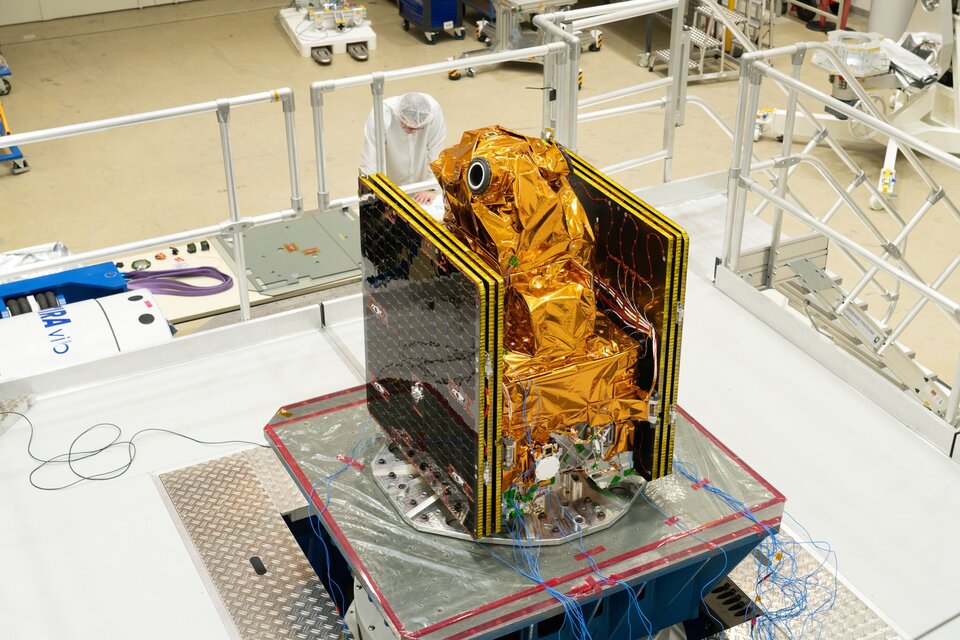The satellite
The Arctic Weather Satellite platform is based on OHB’s Innosat platform, but with a number of upgrades.
Electric propulsion is added to allow the Arctic Weather Satellite to reach the required orbital altitude of 600 km, to maintain its orbit and for any collision avoidance manoeuvres that may be needed.
In addition, the electric propulsion will be used to lower the satellite at the end of its mission.
The satellite has deployable, fixed-angle solar arrays. The power system has been upgraded for a higher instrument power consumption.
The total mass of the satellite is 125 kg and the power consumption around 120 W in nominal operations.
An L-band downlink provides both a direct broadcast and a stored data downlink capability.
The prototype satellite was designed taking into account requirements for the future constellation. Therefore, no design changes are foreseen between the prototype and the EPS-Sterna constellation.

The satellites will comply with space debris mitigation requirements and will reenter Earth’s atmosphere by natural decay within 12 years after operations have ended.
At the end of operations and final manoeuvres, the satellites will be also fully passivated.
Back to Arctic Weather Satellite homepage |










